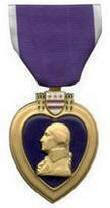Jack Nealy
| Date and Place of Birth: | February 14, 1924 Langdale, AL |
| Date and Place of Death: | March 2, 1945 Iwo Jima |
| Baseball Experience: | Minor League |
| Position: | First Base |
| Rank: | Private |
| Military Unit: | Weapons Company, 28th Marines, 5th Marine Division, US Marine Corps |
| Area Served: | Pacific Theater of Operations |
Jack A. Nealy grew up in Fairfax, one of four Alabama textile mill
towns (the others being Langdale, Riverview, and Shawmut) in the
Chattahoochee Valley located halfway between Montgomery, Alabama, and
Atlanta, Georgia. During the 1930s, the working day in Fairfax began
with the shriek of whistles at the textile Mills, and West Point
Manufacturing - one of the biggest names in the textile industry -
provided the townsfolk with housing that they rented for a few dollars a
month, plus whatever they needed in the way of recreation, churches,
stores, jobs and schools.
Nealy played football and basketball at Fairfax High School, and played
baseball in the Chattahoochee Valley League, in which each town had a
mill-sponsored team. Baseball was a significant part of life in the
valley at the time (a team representing Chattahoochee Valley was among
those vying for a place when the Alabama State League was reformed in
1946), and Nealy was an up-and-coming star.
Following graduation, he went to work for Langdale Mill before signing
with the Birmingham Barons of the Class Al Southern Association during
the late summer of 1943. A first baseman, he played just one minor
league game, failing to get a hit in his only at-bat. The following year
he was with the Marine Corps in the Pacific.
Nealy was a radioman with the 28th Marines, 5th Marine Division, at Iwo
Jima. The 28th Marines landed at the southern-most beaches of Iwo Jima
with the intention of isolating Mount Suribachi. In March 1945, the
Chattahoochee Valley Times ran a story about Nealy fighting the
Japanese. During the early days of the battle, a Japanese sniper was
picking off the Marines unloading supplies on the southern landing
beach. Nealy was sharing a foxhole with Private First Class Irving C.
Birkemeyer, and Birkemeyer saw what appeared to be a slit on the sand
terrace about 30 yards ahead of them. When he looked a second time, the
slit had disappeared and three small rocks had taken its place. Nealy
peered over the edge of the foxhole and confirmed the apparent optical
illusion. "They replaced the rocks with a hand grenade and one more Jap
was exterminated," reported the paper. This upbeat report appeared in
the paper on March 14, 1945, twelve days after Private Jack Nealy had
been killed in action. Private First Class Birkemeyer was killed in
action the day after Nealy.
Jack Nealy's body was returned to the United States after the war and
laid to rest in the family plot at Langdale Cemetery, even though he had
lived most of his life in neighboring Fairfax. A wreath was placed on
Nealy's grave during the 1961 Veterans Day memorial services with family
and friends in attendance, as well as representatives of the Alabama
National Guard. "He and others who sacrificed helped gain something for
us," said John Schofield on the day, post chaplain of the Chattahoochee
Valley American Legion. "Will we maintain it? ... What shall we the
living do to honor the memory of those who fought and died for freedom?"
|
Team |
League |
Class |
G |
AB |
R |
H |
2B |
3B |
HR |
RBI |
AVG |
|
| 1943 | Birmingham | Southern Assoc | A1 | 1 | 1 | 0 | 0 | 0 | 0 | 0 | 0 | .000 |
Date Added February 3, 2012 Updated July 21, 2016
Baseball's Greatest Sacrifice is associated with Baseball Almanac
Baseball's Greatest Sacrifice is proud to be sponsored by

